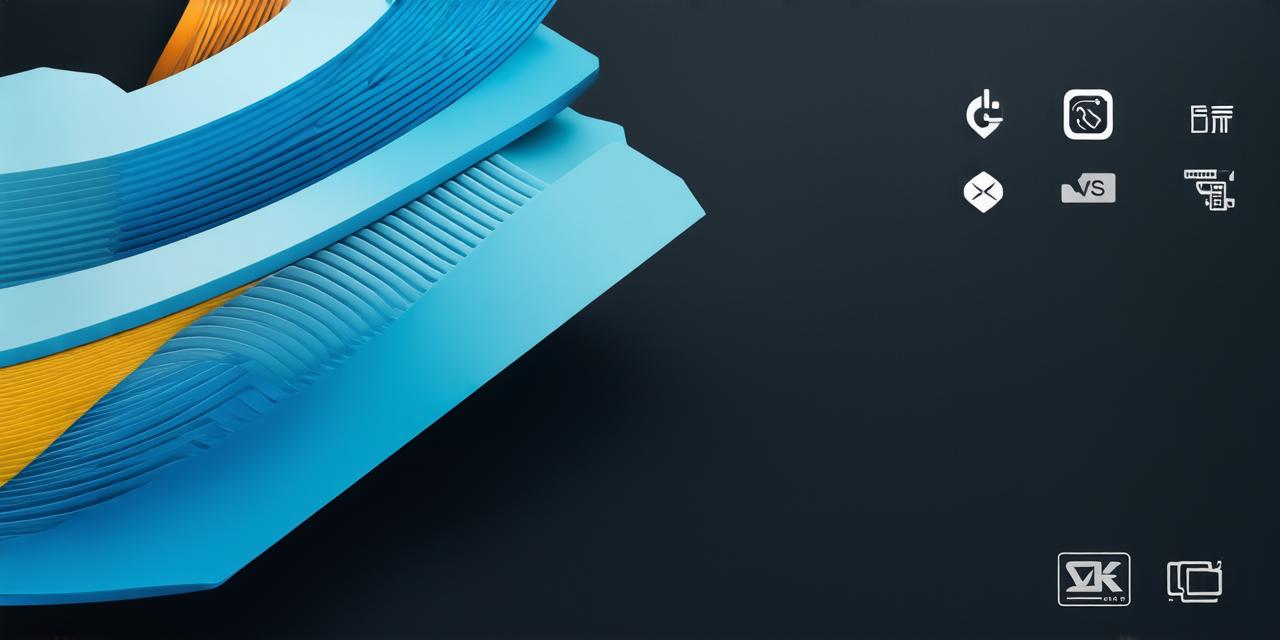<!DOCTYPE html>
1. Choose Your Platform Wisely
The first step in VR development is choosing the right platform. There are several platforms available, including Oculus Rift, HTC Vive, PlayStation VR, and more. Each platform has its unique features and limitations, so it’s crucial to select the one that best fits your needs. For example, if you want to create a mobile VR experience, you should choose a platform that supports Android or iOS devices.
2. Understand the User Experience (UX) Design
The user experience is vital in VR development. It refers to how users interact with your virtual environment and the level of immersion they feel while using it. To create an engaging UX, you need to pay attention to details such as lighting, sound, and motion. You also need to ensure that your virtual environment is easy to navigate and use. A good UX design will keep users engaged and coming back for more.
3. Choose the Right Development Tools
There are several development tools available for VR development. These include Unity, Unreal Engine, and A-Frame. Each tool has its unique features, so it’s crucial to choose the one that best suits your needs. For example, if you want to create a mobile VR experience, A-Frame is an excellent choice as it supports HTML5 and JavaScript. If you are new to VR development, Unity is an excellent choice as it is easy to use and has a large community of developers who can provide support and resources.
4. Optimize Your Virtual Environment for Performance
Optimizing your virtual environment for performance is crucial in VR development. You need to ensure that your environment runs smoothly and without any lag or stuttering. To achieve this, you can use techniques such as reducing the number of draw calls, optimizing textures, and minimizing the number of particles in your scene. A smooth and seamless experience will keep users engaged and immersed in your virtual environment.
5. Test Your Virtual Environment on Multiple Devices
Testing your virtual environment on multiple devices is crucial to ensure that it works seamlessly across all platforms. You should test your VR experience on different devices, including smartphones, tablets, and PCs, to ensure that it runs smoothly and without any issues. This will help you identify any performance or compatibility issues that may arise and fix them before launching your VR experience.
6. Use Real-World Examples as Inspiration
Real-world examples can be a great source of inspiration for VR developers. You can look at existing VR experiences and analyze how they were created. This will help you understand the techniques used by experienced developers and give you ideas on how to improve your own VR experience. You can also attend VR expos or watch VR videos online to see what is possible with this technology.
7. Collaborate with Other Developers
Collaborating with other developers can be an excellent way to learn from their expertise and improve your own skills. You can join online communities, attend conferences, or participate in hackathons to meet other VR developers and learn from their experiences. You can also share your ideas and get feedback from other developers, which can help you refine your VR experience and make it even better.
8. Stay Up-to-Date with the Latest Technologies
VR technology is constantly evolving, so it’s crucial to stay up-to-date with the latest developments. You should read industry blogs, attend conferences, and follow experts in the field to ensure that you are using the latest tools and techniques. This will help you create a VR experience that is cutting-edge and innovative, which will keep your audience engaged and coming back for more.
9. Consider Accessibility
Accessibility is an important aspect of VR development. You should consider how users with disabilities may interact with your virtual environment and design it to be accessible to everyone. This can include adding captions or subtitles for users who are deaf or hard of hearing, using high-contrast colors for users with vision impairments, and ensuring that your VR experience is easy to navigate for users with mobility impairments.
10. Keep Iterating and Improving
Finally, keep iterating and improving your VR experience. You should test it regularly, gather feedback from users, and make changes based on that feedback. This will help you refine your VR experience and make it even better. You can also continue learning and improving your skills as a developer to create more advanced and sophisticated VR experiences in the future.
In conclusion, VR development requires careful planning, attention to detail, and a willingness to learn and improve. By choosing the right platform, understanding UX design, selecting the right tools, optimizing for performance, testing on multiple devices, using real-world examples as inspiration, collaborating with other developers, staying up-to-date with the latest technologies, considering accessibility, and continuously iterating and improving, you can create engaging and immersive virtual environments that will captivate your audience.
